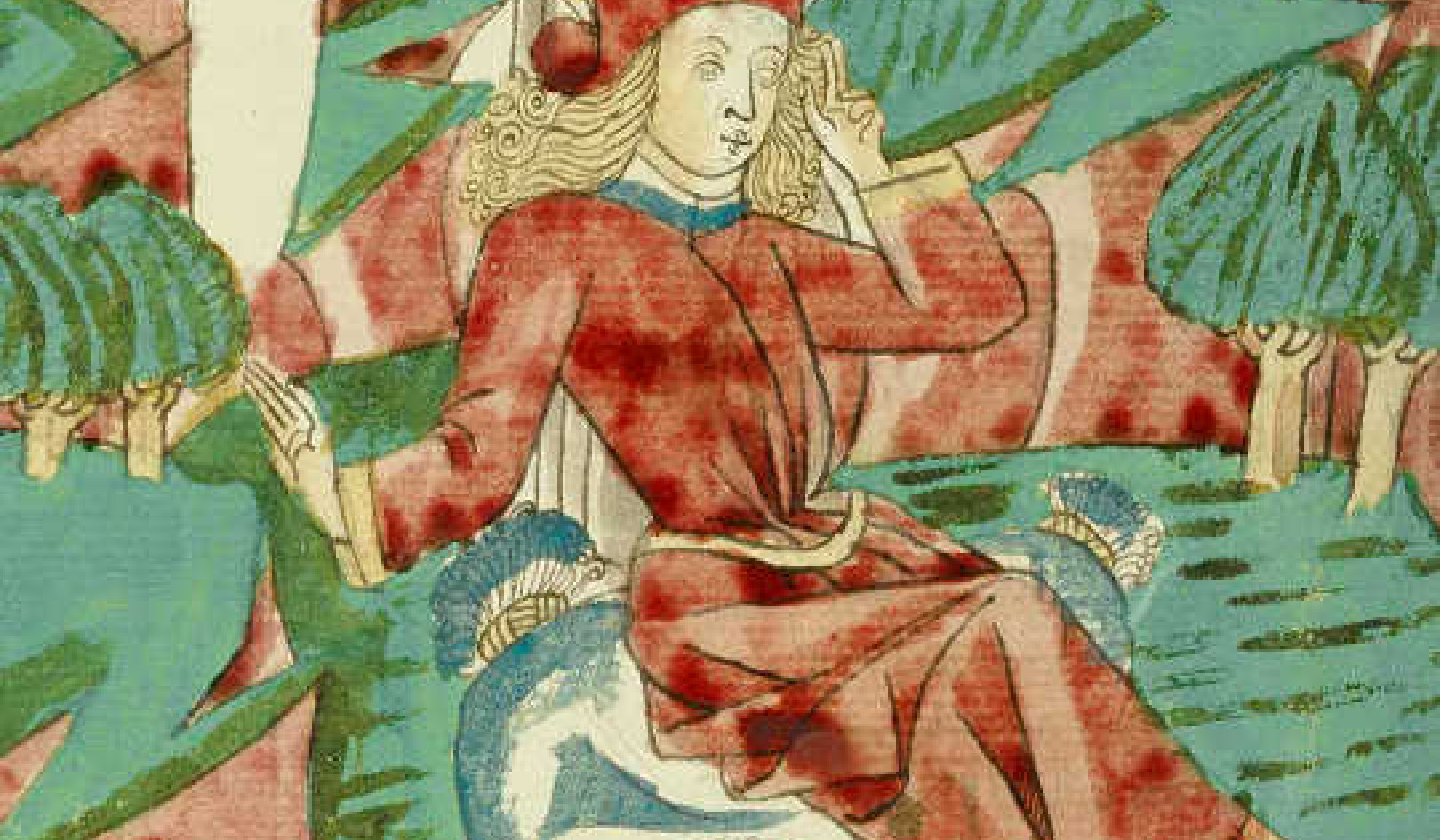
Roger Fisher (1922–2012) served as a reconnaissance pilot in World War II and then graduated from Harvard Law School, becoming a professor there in 1958. Witnessing maiming and death firsthand during the war and then seeing the destructive effects of costly, protracted litigation as a partner in a major law firm, Fisher was passionate about finding more creative alternatives to resolve conflict.
In 1979 he cofounded the Harvard Negotiation Project, where he and his colleagues sought out the most skilled negotiators to learn and codify their strategies. Over the years they applied what they learned to help many companies and institutions resolve conflict, while also consulting with those who were aiming to bring peaceful resolutions to some of the world’s most intractable political conflicts. (Fisher played a key role in advising President Carter in brokering the peace deal between Egypt and Israel.)
In 1991 he and William Ury published the classic bestseller Getting to YES. Fisher and those who have followed in his footsteps discovered that the most effective negotiators, whether in business or in mediating global conflict, are skilled in the art of connection. They manage their own emotions (centering), and they focus on blending (empathizing and connecting) with the other side’s point of view, before offering creative solutions designed to meet the needs of all the parties involved (inventing options for mutual gain).
Fisher and Ury describe the importance of blending, of empathy, in the face of conflict: “The ability to see the situation as the other side sees it, as difficult as it may be, is one of the most important skills a negotiator can possess.”
They emphasize that this is more than just an intellectual process in which we understand that others may see things differently than we do. Rather, we must empathically experience the “emotional force” that animates their point of view.
“It is not enough to study them like beetles under a microscope; you need to know what it feels like to be a beetle,” they say.
They explain how the art of connection sets the stage for effective conflict resolution and negotiation: “The more quickly you can turn a stranger into someone you know, the easier a negotiation is likely to become.... Find ways to meet them informally.... A note of sympathy, a statement of regret, a visit to a cemetery, delivering a small present for a grandchild, shaking hands or embracing, eating together — all may be priceless opportunities to improve a hostile emotional situation at small cost.”
Inventing Options For Mutual Gain
Once we understand the feelings, needs, and interests of the other side in a conflict or negotiation, we are obviously in a much better position to discover creative solutions. Fisher and Ury advise, “Invent several options all equally acceptable to you and ask the other side which one they prefer.”
The ability to invent options for mutual gain is predicated on your skill at recovering your center. When you’re centered, you are able to clarify the situation (assess the TRIP: timing, relationship, intention, place) and separate the people from the problem and observations from evaluations.
Before looking for creative solutions remember: Conjungere ad solvendum, Connect before solving. Attune to and empathize (blend) with feelings: “How do I/they feel about the situation?” “What are the underlying needs that I/they have in this situation?”
Once you’re connected and attuned to underlying feelings and needs, you’ll discover that it’s much easier to think creatively about solutions. Turn friction into momentum by asking: “Is there anything that I/they haven’t thought of yet that might meet the needs that I/they have in this situation?”
Sweet Fruit from the Bitter Tree
Mark Andreas spent seven years compiling the stories in his book Sweet Fruit from the Bitter Tree: 61 Stories of Creative and Compassionate Ways out of Conflict. Mark explains that in every story he collected positive outcomes were achieved because those involved kept or recovered their connection, first with themselves and then with others.
What does Mark believe to be the core secret to successful conflict resolution?
He responds, “In a word, my answer is: connection.”
The Greatest Point of Leverage
I’m not going to stop torturing myself
till I figure out the cause of my pain.
— MATT GROENING, creator of The Simpsons
Skill in preventing, managing, or resolving conflict with others requires a continuing process of preventing, managing, or resolving our internal conflicts. The greatest point of leverage for resolving conflict internally, and externally, is to cultivate the ability to organize your nervous system, and to reorganize quickly when you feel threatened or stressed. When you are centered and present, you are able to connect, and when you connect, you can blend and lead.
The key is to practice centering every day when it’s not urgent, so you can do it when it is. Here’s an acronym to help you organize your nervous system to prevent or resolve conflict.
RESOLVE
R - Remember to pause
E - Exhale
S - Smile
O - Observe
L - Lengthen your spine
V - Visualize
E - Expand and empathize
Remember to Pause
Pause, so you can affirm your intention. Conflict is natural; it’s an opportunity to be creative, and it isn’t a contest. What outcome do you want? If you can pause and affirm a positive intention in what seems like a negative situation, you’ll shift your physiology and psychology to a more resourceful state.
Exhale
Exhale fully. You can whisper an extended “Ahhhh” sound to release your breath. Then inhale through your nose into your lower belly. Allow the lower belly, ribs, and back to expand as you inhale. Then extend your exhalation to slow your breathing. The fight-or-flight response is characterized by rapid, shallow breathing. Slowing and deepening the breath instantly move your biochemistry toward relaxation.
Smile
Imitate the subtle smile of the Mona Lisa. Smiling also shifts your physiology out of the fight-or-flight state. Thanks to mirror neurons, your smile is contagious; it sends a disarming message to others.
Observe
Observe what’s actually happening, separate from your evaluation, and assess the TRIP (timing, relationship, intention, place) .
Lengthen Your Spine
Shift your posture to align along your vertical axis. An upright posture activates the extensor muscles and counters the flexion associated with fight or flight.
Visualize
Visualize yourself as free, lengthening, and open. Soften your gaze to expand your peripheral vision. In the fight-or-flight pattern we tend to narrow the gaze.
Expand and Empathize
Expand your energy in a sphere around you. As you do, check in with your feelings and needs and attune to the feelings and needs of others.
To support you in your practice, I’m providing a link to a free page on my website where I will guide you in this practice and share a few more: www.michaelgelb.com. Once you get into the habit of centering, you’ll find yourself doing it more frequently, as it feels good and is naturally self-reinforcing. The more you practice, the better it feels and the easier it is to do it when you really need it.
A New Respect
Aikido translates enlightened notions of interpersonal harmony into embodied experience. As you practice centering on your own, you’ll want to experiment with the way you can actually blend with someone else’s energy to create a deeper connection. Try this exercise:
Stand opposite a partner. (For beginners it’s best to find someone about your height and weight. As you get more advanced, you can do this with people who are much bigger and stronger.)
Your partner stands in a comfortable, balanced, upright stance, with left foot forward, right foot back.
Stand facing your partner in a comfortable, balanced, upright stance, with left foot forward, right foot back.
Extend your right arm toward your partner as though you were going to shake hands. Your partner grabs your right wrist with his left hand and holds firmly.
Imagine a line drawn horizontally between you, and attempt to pull your partner across the line onto your side. Your partner’s job is to resist without leaning back and to hold firmly without letting go of your wrist. You’ll discover that unless there’s a gross disparity between your strength and your partner’s, you will not be able to pull him across the line.
It’s usually clear to both parties, and to witnesses, in a matter of seconds that you won’t be able to move your partner this way.
Ask your partner to let go, and both of you take a minute to discuss what it feels like: for you to try to force your partner across the line and for him as he receives the force.
Now begin again. But this time, as your partner grabs your wrist, focus on centering yourself. Instead of attempting to pull him across the line, relax your right elbow so it sinks down and extend the energy from the back of your wrist into your partner’s grip. As your right elbow sinks, allow your right index finger to float up so it’s pointing toward the sky in a spiral pattern. You’ll notice that your partner’s left elbow is floating up.
Then, keeping your elbow and hand in line with the center line of your torso, pivot to your right. If your partner holds on, as he is supposed to, he will find that he’s on your side of the line.
A few years ago I was teaching an introductory aikido class as part of a three-week residential leadership development and team-building program for a group of twenty-four international investment bankers. We discussed centering and blending in the seminar room and then moved to a dojo that they had built as part of their corporate university facility.
I invited the biggest and strongest-looking character in the class to help in the demonstration. He also happened to be the most senior member of the British division of the bank. When Paul, who looked like a fit version of Winston Churchill, grabbed my wrist in the first part of the demonstration, I was shocked by the viselike quality of his grip. There was no way I could budge him using my strength against his, and the smug, self-satisfied look on his face told me that he also knew this right away.
I said to the class, “Paul is a very powerful guy, and there’s obviously no way I can get him over to my side using strength alone.” They chuckled, and everyone, especially Paul, was sure that they were about to witness an embarrassing (for me) but amusing (for them) failed demonstration.
Here’s what happened next. I said, “Paul, please grab my wrist again and hold even tighter. Just promise me you won’t let go.” He nodded and smirked. I continued, “I obviously can’t move Paul with force, so instead I’m just going to connect with myself, with my own center, and as I do that I can feel Paul’s center too.”
I relaxed and dropped my elbow and floated my right index finger toward the ceiling. Paul’s elbow drifted up.
“Now that I’m connected to Paul’s center,” I said, “let’s see what happens if I turn around my central axis.”
What happened? Paul not only came over to my side, but he seemed to float over like a ballerina. When he landed across the line, his look of utter astonishment was followed by a delightful quip that he shared in a voice just loud enough for the whole class to hear. He said, “I have a new respect for you.”
Everyone laughed, and then I showed Paul how to bring me to his side by centering and blending.
All of the investment bankers got the message. As the head of the U.S. branch commented, “I have always met aggression with more aggression. I usually win. But now I see there’s a better way.”
Copyright ©2017 by Michael J. Gelb.
Reprinted with permission from New World Library
www.newworldlibrary.com.
Article Source
The Art of Connection: 7 Relationship-Building Skills Every Leader Needs Now
by Michael J. Gelb.
 These days, it’s often easier to avoid face-to-face contact in favor of technological shortcuts. But as Michael Gelb argues in this compelling, entertaining book, the meaningful relationships that come from real interaction are the key to creating innovative ideas and solving our most intractable problems. In The Art of Connection, Gelb offers readers seven methods of developing this essential rapport in their professional and personal lives.
These days, it’s often easier to avoid face-to-face contact in favor of technological shortcuts. But as Michael Gelb argues in this compelling, entertaining book, the meaningful relationships that come from real interaction are the key to creating innovative ideas and solving our most intractable problems. In The Art of Connection, Gelb offers readers seven methods of developing this essential rapport in their professional and personal lives.
Click here for more info and/or to order this paperback book and/or download the Kindle edition.
About the Author
 Michael J. Gelb is the author of The Art of Connection and has pioneered the fields of creative thinking, accelerated learning, and innovative leadership. He leads seminars for organizations such as DuPont, Merck, Microsoft, Nike, Raytheon, and the University of Virginia’s Darden School of Business. He is the coauthor of Brain Power and author of How to Think Like Leonardo da Vinci and several other bestsellers. His website is www.MichaelGelb.com
Michael J. Gelb is the author of The Art of Connection and has pioneered the fields of creative thinking, accelerated learning, and innovative leadership. He leads seminars for organizations such as DuPont, Merck, Microsoft, Nike, Raytheon, and the University of Virginia’s Darden School of Business. He is the coauthor of Brain Power and author of How to Think Like Leonardo da Vinci and several other bestsellers. His website is www.MichaelGelb.com
Books by this Author
at

Thanks for visiting InnerSelf.com, where there are 20,000+ life-altering articles promoting "New Attitudes and New Possibilities." All articles are translated into 30+ languages. Subscribe to InnerSelf Magazine, published weekly, and Marie T Russell's Daily Inspiration. InnerSelf Magazine has been published since 1985.

Thanks for visiting InnerSelf.com, where there are 20,000+ life-altering articles promoting "New Attitudes and New Possibilities." All articles are translated into 30+ languages. Subscribe to InnerSelf Magazine, published weekly, and Marie T Russell's Daily Inspiration. InnerSelf Magazine has been published since 1985.
























